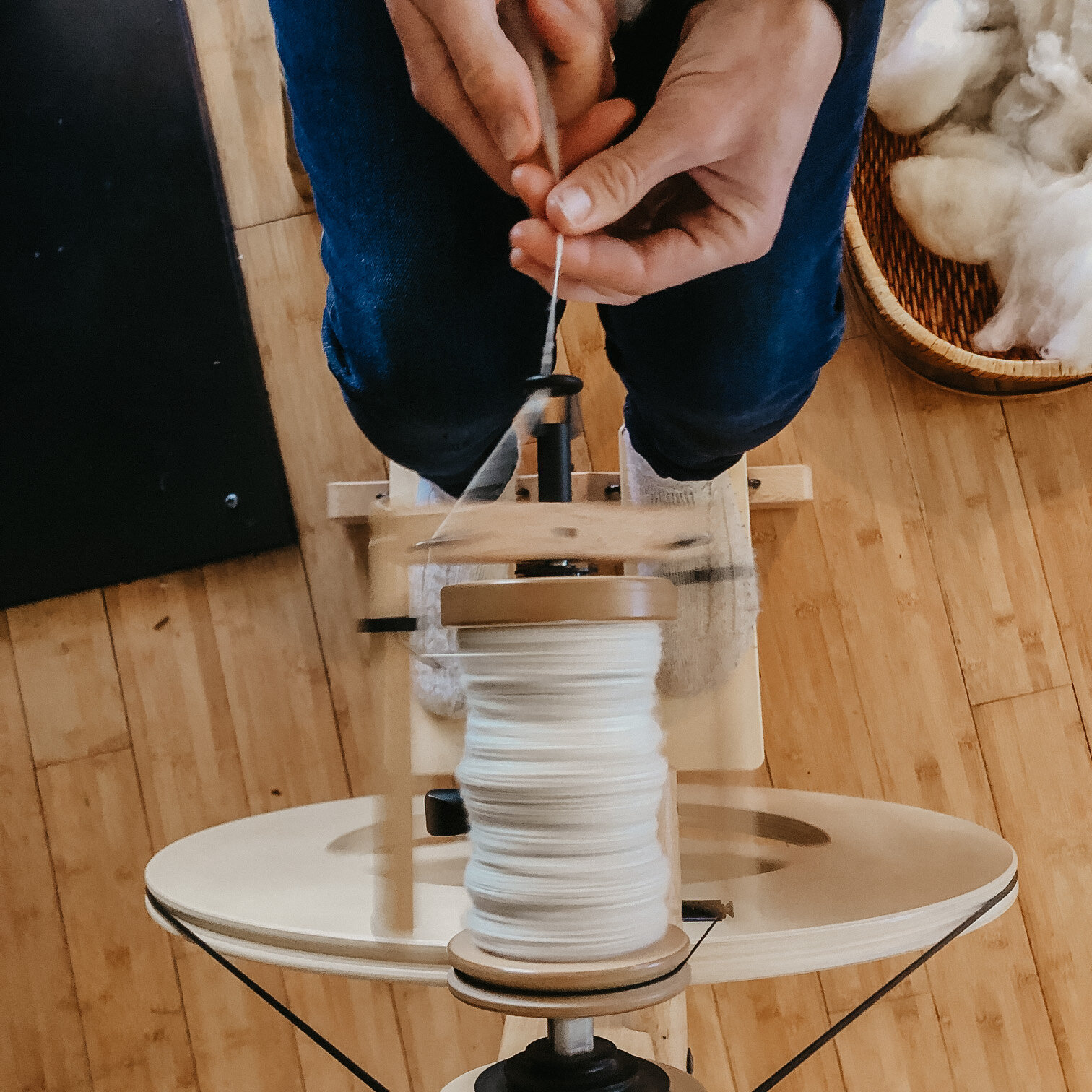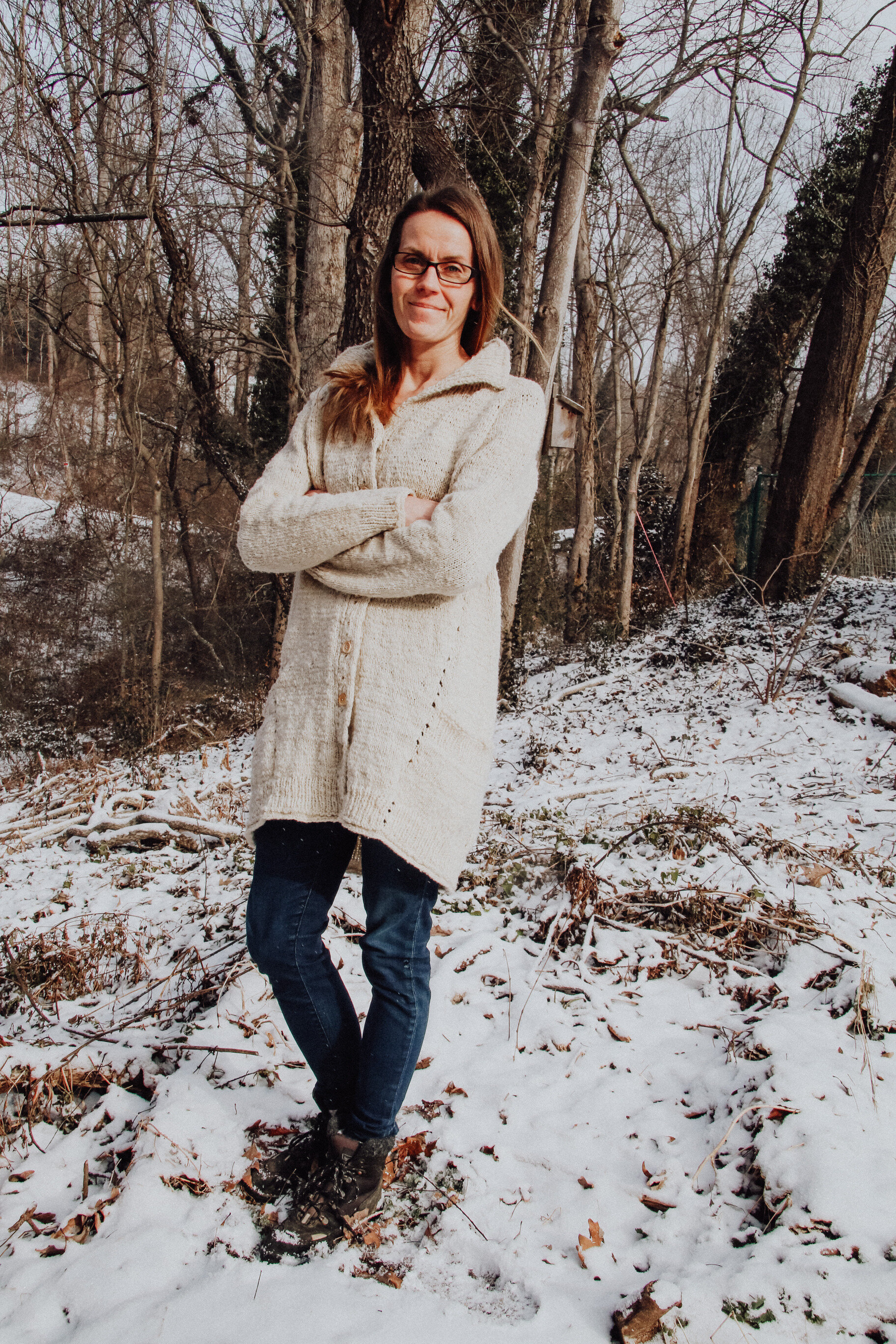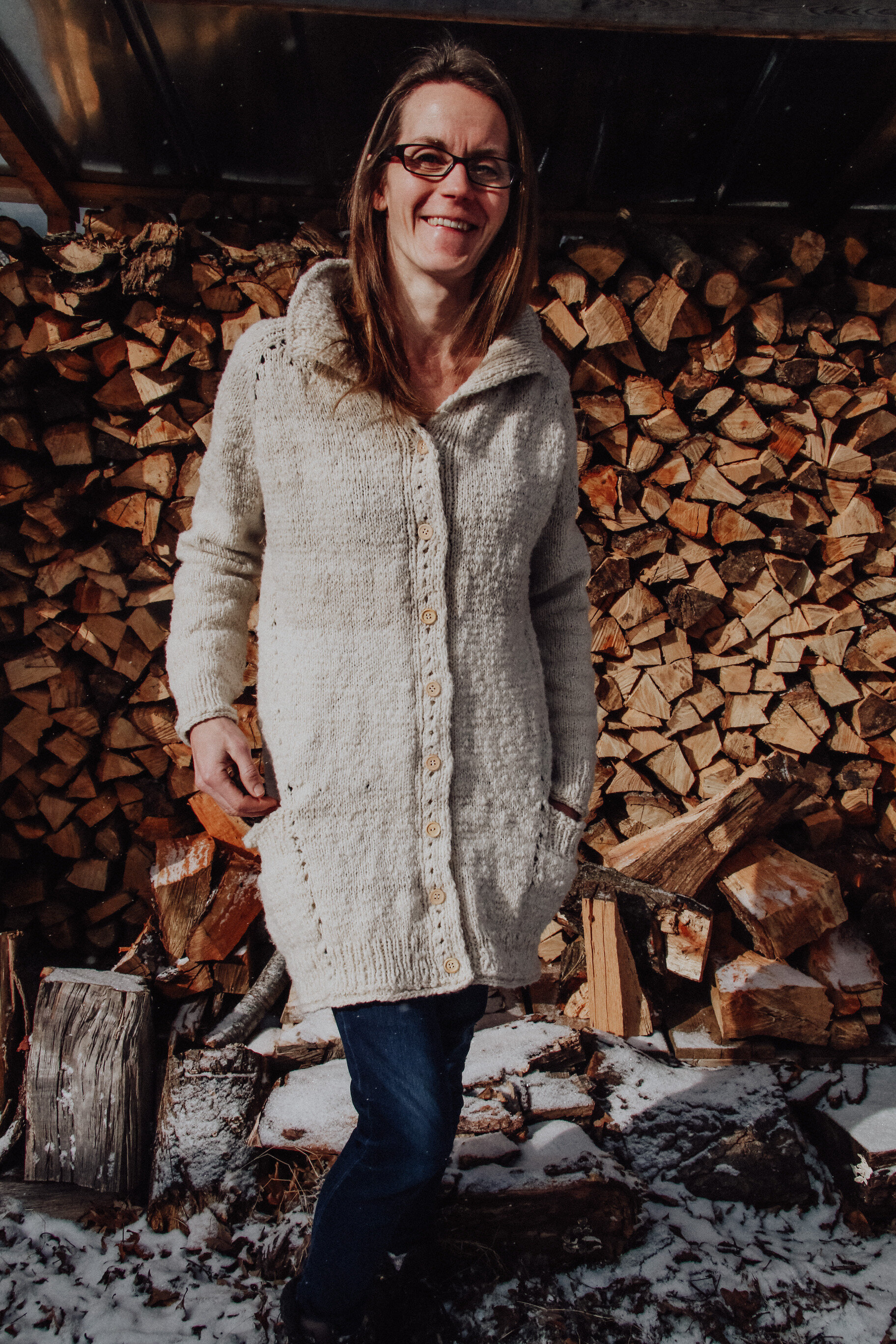Sheep to sweater, Part II
This is the second part in a two-part series about the process of making a knitted garment out of raw sheep's fleece. Read Part I here. In this part, we focus on spinning and knitting raw wool.
My sheep-to-sweater project is complete! Actually, it became a cardigan, but “sheep to sweater” sounds better, don’t you think?
I’m one of those people who are always cold. Layers, two pairs of socks, huddling close to the wood stove all winter long — you get the picture. I’ve long been dreaming of a long wool cardigan, long enough to cover my waist and bum. I tried to find one second-hand on ThredUp, where I buy most of my clothes, but guess what: it’s nearly impossible to find one that is 100% wool. And I’ve made a commitment to transition out of using synthetic fibers, for many reasons.
So, logically, I called up Sebette, a local sheep farmer I know.
With this cardigan, I’ll never be cold again. Not only is it 100% wool and thick the way hand-spun garments often are, but the wool retains some of its natural lanolin, which insulates and even repels moisture. (Actually that was sort of unintended. Washing the wool is meant to remove the lanolin, but my washing process was not perfect — I didn't get the water quite scalding hot enough. As a result, I now have an extra warm cardigan.)
Spinning the wool
All through the long winter evenings, I spun wool. Spinning is a meditative “flow” activity if there ever was one: the motion of the wheel literally pulls the fiber, pulling you along. You can focus on the craft yet at the same time let your mind wander a bit, in a way that is soothing and relaxing.
Spinning is definitely a craft that must be practiced and learned. (It took me about 3 weeks to get the hang of it when I started 9 years ago.) But once you do, you get into a rhythm with the wheel, you develop an instinctive feel for when to keep your grip tight or relaxed, when to go fast or slow.
If you're new to spinning but curious to get started, here's a comprehensive "How to Get Started with Spinning" resource.
Each strand of the yarn is spun separately, and then the individual strands are plied together to make the final yarn. I spun a two-ply yarn. The cardigan pattern called for sport weight yarn; I actually spun extrafine most of the time, but the strands bloom a bit when they are plied, and the end result was sport- to worsted weight most of the time, with some thick-and-thin bits that I happen to like.
This was my first time spinning Cormo sheep wool. Cormo is a breed developed in Tasmania, a cross between Corriedale and Merino. I’d heard spinners and knitters get excited about Cormo wool before, and now I know why: the wool has softness, luster and a well-defined crimp that gives it elasticity.
Knitting the cardigan
The knitting pattern I chose is Naima cardigan by Ankestrick (Ravelry link). It's knitted from the top down, with eyelet rows that go all the way down, as well as pockets, which allowed me to learn a couple of new techniques.
When you and you alone are responsible for all the steps (except for raising the sheep), you begin to realize the value of solid preparatory work. Your knitting is only as good as your spinning. Your spinning is only as good as your carding. And your carding won’t be good unless you took good care in the preceding steps, skirting and washing the wool.
The final product
Here, at long last, is my Snow Flurry cardigan, named after the sheep whose wool I used.
The cardigan has that live, handspun look I happen to love. And it is so. warm.
Since this is slow fashion, I had a lot of time to think. As I scoured, sorted, carded, spun and knit this wool, I thought about the fact that this is how clothing used to be made — how much labor and time went into a single garment, and how much value was placed on that garment as a result. I imagine that our forebears would have perhaps just one warm woolen item like this every winter, and that they cared for it accordingly. A far cry from the present fast fashion culture of buy-wear-toss.
One thing you can be sure of, now that I've definitely put 100+ hours into this garment: I will care for it well.






